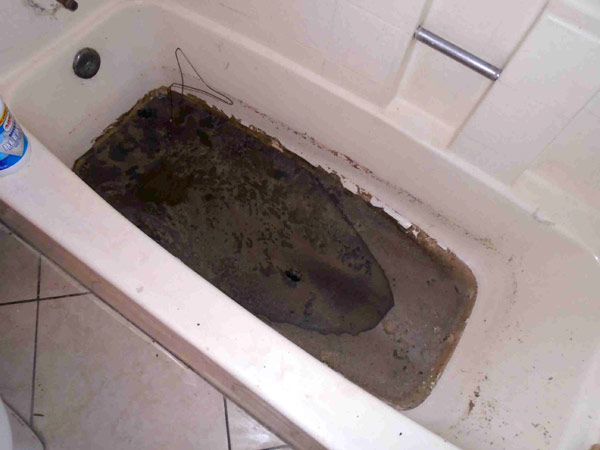Uncovering the Causes of Discharge in the Bathtub
Uncovering the Causes of Discharge in the Bathtub
Blog Article
We have stumbled upon this post involving Why is Sewage Backing Up Into My Bathtub? below on the web and accepted it made sense to write about it with you over here.

Sewage backup in the tub can be a distressing and unhygienic trouble for any kind of homeowner. Not just is it bothersome, yet it likewise positions major health threats and suggests underlying concerns with the plumbing system. Understanding why sewer is coming up through the bath tub is critical for taking suitable action to address the problem efficiently.
Introduction to the Problem
Understanding the Trouble
When sewer draws back up right into the tub, it's a clear indicator of an issue with the drain system. The wastewater that must be moving far from your home is rather locating its back into your home, which can cause considerable damages and carcinogen.
Potential Reasons
A number of factors can add to sewage back-up in the bath tub. From obstructions in the sewage system line to problems with the plumbing framework, determining the origin is crucial for discovering a remedy.
Common Reasons for Sewage Backup
Obstructions in the Sewage System Line
Among one of the most usual causes of sewage backup is a clog in the drain line. This can happen due to the buildup of debris, grease, or international objects in the pipes, stopping correct circulation and creating sewer to back up into your bath tub.
Tree Origin Invasion
Tree roots looking for dampness and nutrients can infiltrate sewer lines via tiny fractures or joints. Gradually, these roots can expand and broaden, creating significant damages to the pipes and leading to sewage back-up concerns.
Aging Facilities
Older homes may have dated plumbing systems that are more at risk to deterioration, cracks, and deterioration. As pipelines age, they come to be much more prone to leaks and clogs, raising the probability of sewer backup occurrences.
Heavy Rainfall or Flooding
During periods of heavy rainfall or flooding, the drain system might end up being overwhelmed with excess water, triggering backups and overflows. This can lead to sewer backing up into tubs and other fixtures inside the home.
Health Dangers Connected With Sewer Back-up
Contamination of Water Supply
Sewer backup can contaminate the water system in your home, presenting a serious health and wellness threat to you and your household. Direct exposure to contaminated water can cause gastrointestinal concerns, skin infections, and various other illnesses.
Spread of Condition
Sewage has dangerous bacteria, infections, and bloodsuckers that can trigger a series of diseases, including hepatitis, cholera, and gastroenteritis. Entering into contact with sewer or infected surface areas places you at risk of infection.
Mold Growth
Moisture from sewer backup can create perfect conditions for mold and mildew development in your house. Mold and mildew spores can aggravate respiratory problems and create allergic reactions in sensitive individuals, making punctual clean-up essential.
Indicators of Sewage Back-up
Foul Odors
Unpleasant odors originating from drains pipes or fixtures, specifically in the washroom, may suggest sewer back-up issues. These smells are frequently solid and consistent, signaling a trouble that requires instant interest.
Slow Draining Fixtures
Bath tubs, sinks, and toilets that drain gradually or not in any way could be experiencing sewer backup. If several fixtures are impacted all at once, it's likely that the concern originates from a typical point, such as the primary sewer line.
Gurgling Sounds
Odd gurgling or gurgling noises originating from drains when water is running elsewhere in the house are a sign of air entraped in the plumbing system. This air buildup can arise from sewage backup and need to be explored quickly.
Immediate Actions to Take
Switching Off Water System
In case of sewer back-up, it's necessary to shut off the water system to prevent further contamination and damage. Locate the primary water shutoff valve in your home and closed it off till the problem can be settled.
Calling a Specialist Plumber
Handling sewage backup is not a do it yourself task. Call a certified plumber with experience in taking care of sewage-related issues to examine the situation and perform needed repairs or cleanups.
Staying Clear Of Contact with Contaminated Water
Till the sewage backup is settled, prevent contact with infected water to avoid the spread of bacteria and microorganisms. Wear safety equipment if you should be in the affected location and wash your hands extensively afterward.
Safety nets
Routine Maintenance of Sewer Lines
Arrange routine assessments and maintenance of your sewage system lines to identify and address prospective concerns prior to they rise into significant issues. This can consist of cleaning out particles, checking for tree root invasion, and fixing any type of broken pipes.
Mounting Bayou Valves
Consider installing bayou valves in your plumbing system to prevent sewage from receding right into your home throughout periods of heavy rainfall or flooding. These shutoffs automatically close when water starts backing up, protecting your residential property from contamination.
Correct Disposal of Family Waste
Prevent flushing anything aside from bathroom tissue and human waste down the toilet to avoid blockages and clogs in the sewage system line. Dispose of oil, oil, and various other home chemicals effectively to reduce the risk of plumbing issues.
Tidying up After Sewer Backup
Disinfection Procedures
Thoroughly sanitize and sterilize affected areas after sewer backup to remove hazardous microorganisms and stop mold and mildew development. Usage appropriate cleaning items and safety equipment to make certain secure and reliable clean-up.
Remediation of Impacted Locations
Fix any kind of damages to flooring, wall surfaces, or fixtures triggered by sewage backup. Depending upon the level of the damage, you may require to replace carpets, drywall, or various other materials to recover your home to its pre-loss condition.
Why Is Water Backing Up in My Bathtub When I Flush My Toilet?
What to do about a sewer line clog
First, don’t bother with plunging. No amount of plunging will dislodge the clog in a sewer line. The clog is too far away. Plungers are for clogs in the toilet itself, not the sewer line. Plus, the most likely causes of a sewer clog are:
Tree roots Flushed toys or feminine products Grease buildup Those items don’t move easily. And in the case of tree roots, the roots need to be cut out of the pipe and the pipe will need to be repaired.
You’ll need a closet auger. A closet auger is a type of plumber’s snake with a protective cover to keep from scratching the delicate porcelain toilet. If the clog is further down, you may need to remove the toilet or use one of your cleanouts to get to the clog.
We also recommend doing a video inspection of the drain to ensure that the cause of the clog has been completely removed. Otherwise, you could have the same problem again in a few days or weeks.
https://mspplumbingheatingair.com/blog/why-is-water-backing-up-in-my-bathtub-when-i-flush-my-toilet

Hopefully you enjoyed reading our piece on What To Do If Sewage Starts Backing Up Into the Shower. Thanks a ton for taking the time to browse our piece of content. Those who liked our article plz don't forget to share it. Thank you for being here. Revisit us soon.
Schedule A Free Estimate
Report this page